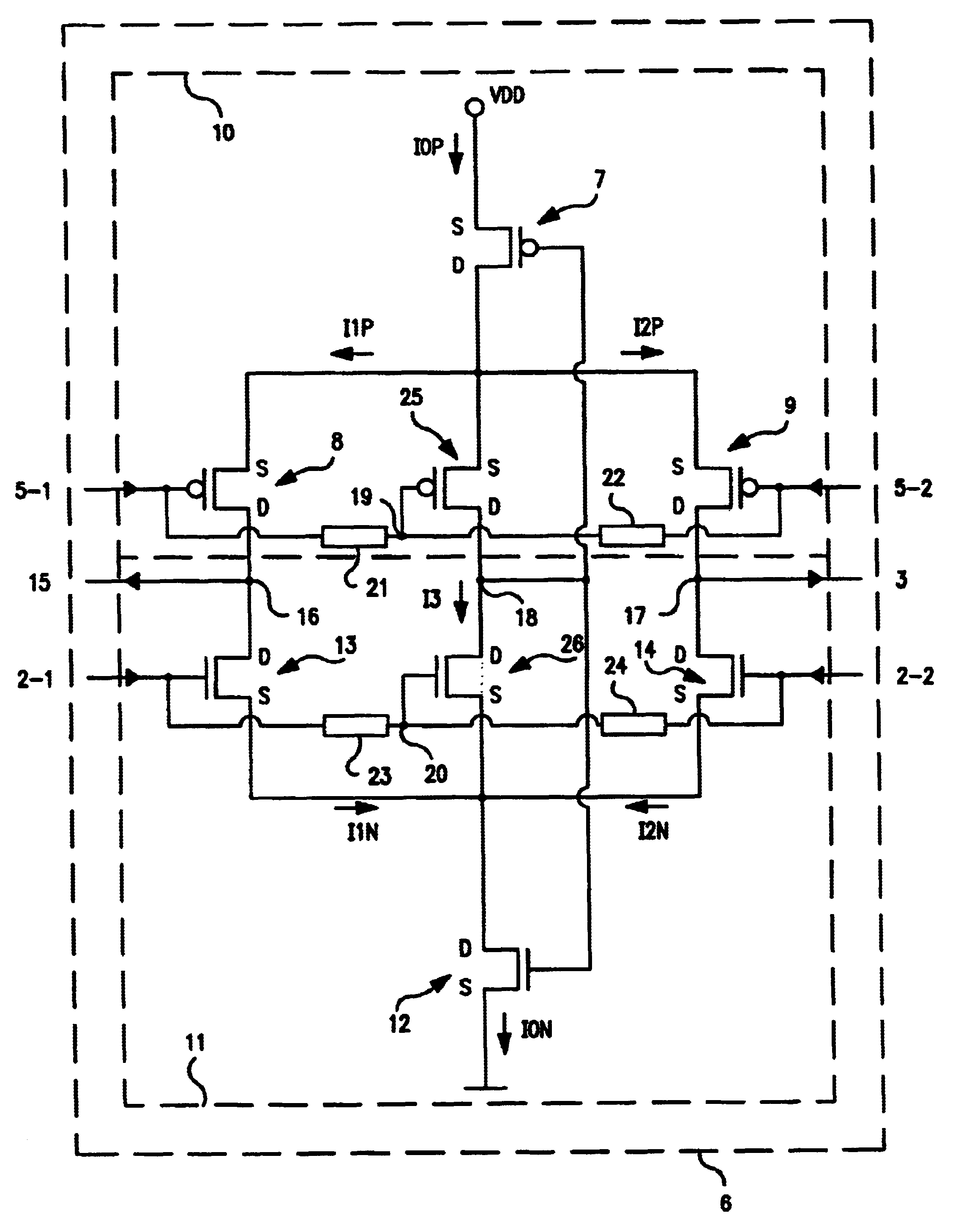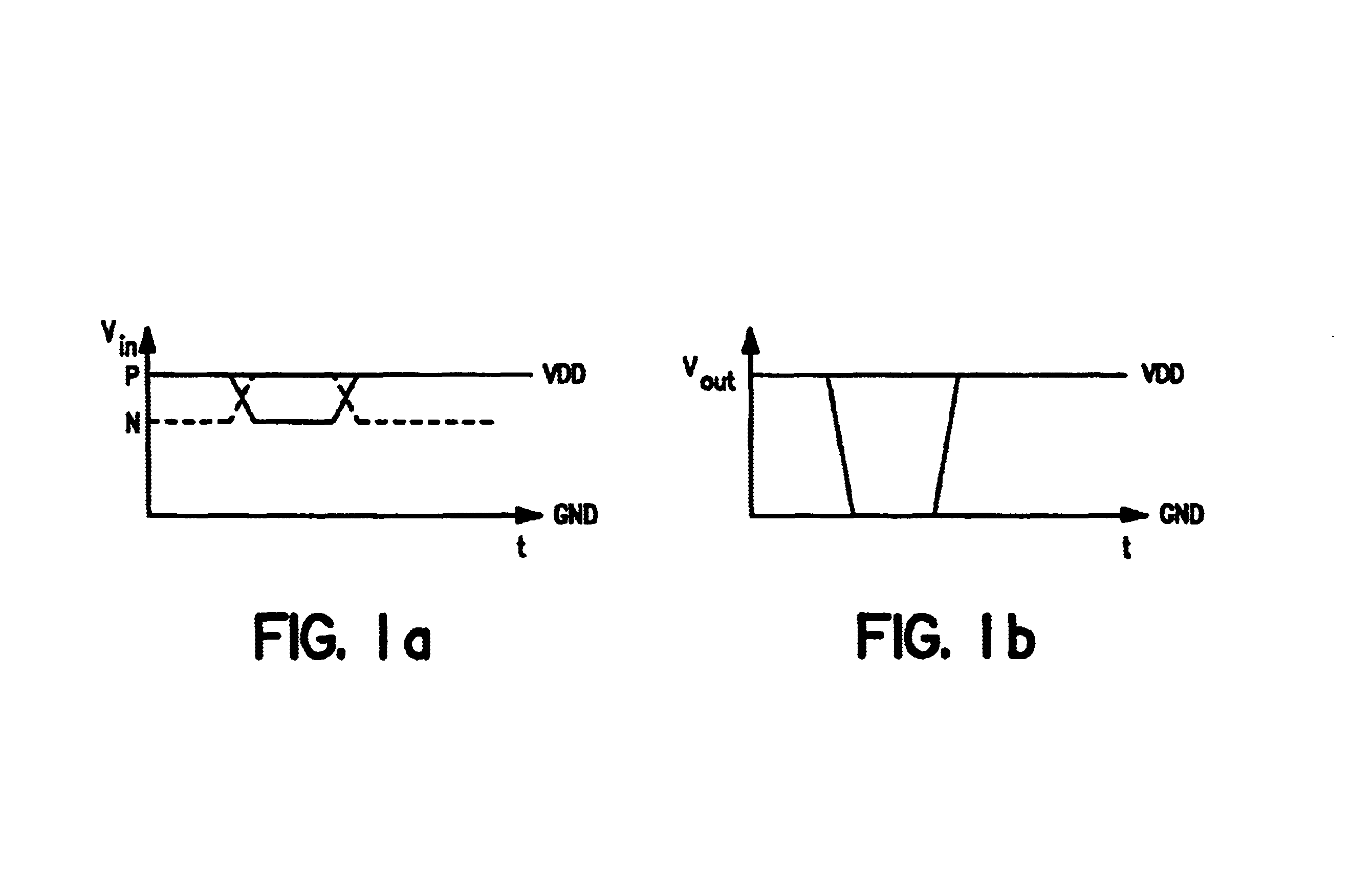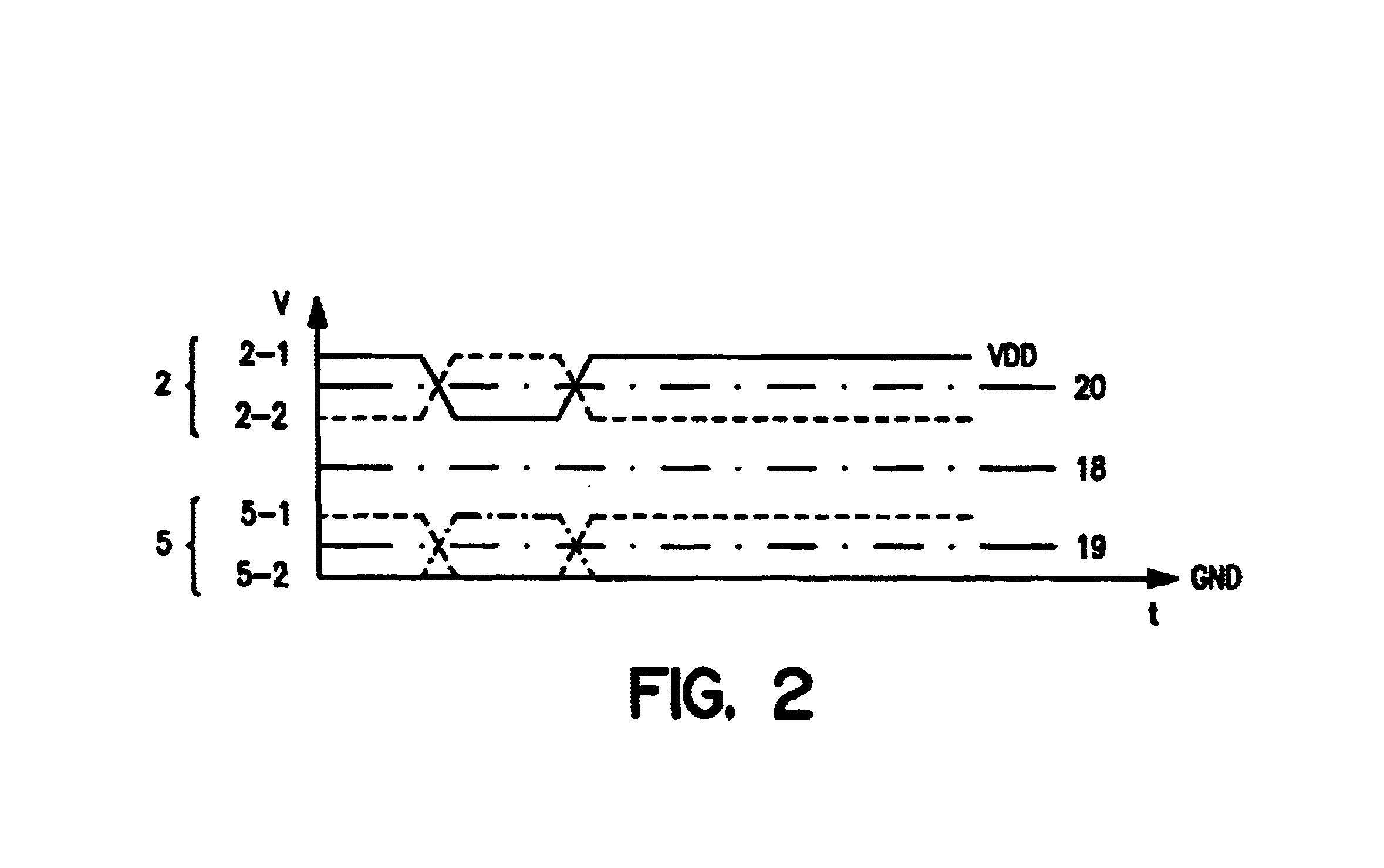Differential to single-ended logic converter
a logic converter and converter technology, applied in the direction of logic circuit coupling/interface arrangement, multi-input and output pulse circuits, pulse techniques, etc., can solve the problem of relatively high current consumption of current mode logic circuits, and achieve the effect of convenient implementation
- Summary
- Abstract
- Description
- Claims
- Application Information
AI Technical Summary
Benefits of technology
Problems solved by technology
Method used
Image
Examples
Embodiment Construction
[0028]The present invention is a converter stage for converting a differential logic input signal and a corresponding common mode differential logic signal each having a first single-ended logic signal and a complementary second single-ended logic signal into a single-ended logic output signal.
[0029]FIG. 2 shows a typical differential current mode logic signal 2 that comprises a first single-ended logic signal 2-1 and a complementary second single-ended logic signal 2-2, wherein the mid-potential 20 of the differential signal 2 is centered between the minimum and maximum voltage level of the signal 2 corresponding to the two logic levels. The corresponding common mode differential logic signal 5 comprises a first and a second single-ended logic signal 5-1, 5-2 each having a minimum voltage level and a maximum voltage level and a mid-potential centered in between 19. In the common mode logic signal 5 the minimum voltage level is usually referenced to ground GND. FIG. 2 further illust...
PUM
 Login to View More
Login to View More Abstract
Description
Claims
Application Information
 Login to View More
Login to View More - R&D
- Intellectual Property
- Life Sciences
- Materials
- Tech Scout
- Unparalleled Data Quality
- Higher Quality Content
- 60% Fewer Hallucinations
Browse by: Latest US Patents, China's latest patents, Technical Efficacy Thesaurus, Application Domain, Technology Topic, Popular Technical Reports.
© 2025 PatSnap. All rights reserved.Legal|Privacy policy|Modern Slavery Act Transparency Statement|Sitemap|About US| Contact US: help@patsnap.com



